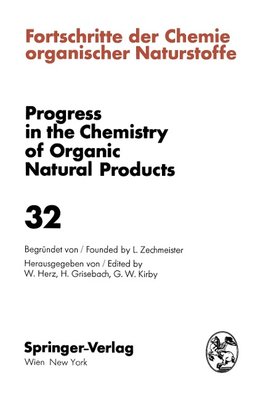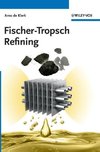
-
 Anglický jazyk
Anglický jazyk
Fortschritte der Chemie Organischer Naturstoffe / Progress in the Chemistry of Organic Natural Products
Carboxylic Acids in Petroleum and Sediments..- I. General.- 1. Introduction.- 2. Occurrence.- 3. Derivatization.- II. Paraffinic Acids.- 1. Linear Fatty Acids.- 2. Unsaturated Fatty Acids.- 3. Iso and Anteiso Acids.- 4. Isoprenoid Acids.- 5. ¿Pseudo¿ Isoprenoid... Viac o knihe
Na objednávku
49.49 €
bežná cena: 54.99 €
O knihe
Carboxylic Acids in Petroleum and Sediments..- I. General.- 1. Introduction.- 2. Occurrence.- 3. Derivatization.- II. Paraffinic Acids.- 1. Linear Fatty Acids.- 2. Unsaturated Fatty Acids.- 3. Iso and Anteiso Acids.- 4. Isoprenoid Acids.- 5. ¿Pseudo¿ Isoprenoid Acids.- III. Cyclic Saturated Acids.- 1. Monocyclic Acids.- 2. Bi- and Polycyclic Naphthenic Acids.- 3. Tricyclic Terpenoid Acids.- 4. Steroid Acids.- 5. Pentacyclic Triterpenoid Acids.- IV. Aromatic Acids.- 1. Mono- and Diaromatic Acids.- 2. Polynuclear Aromatic and Heterocyclic Carboxylic Acids.- V. The Origin of Petroleum Carboxylic Acids.- VI. Bifunctional Acids.- 1. Dicarboxylic Acids.- 2. Hydroxy- and Ketoacids.- 3. Amino Acids.- 4. Miscellaneous.- References.- Naturally Occurring 2,5-Dioxopiperazines and Related Compounds..- I. Introduction.- II. Synthesis of 2,5-Dioxopiperazines.- III. Conformations of Dioxopiperazines.- IV. Simple Dioxopiperazines.- V. The Echinulins and Related Derivatives.- VI. Hydroxypyrazine Derivatives.- VII. Sulphur-bridged Dioxopiperazines.- VIII. Bicyclomycin and Dibromophakellin.- References.- Structural Investigations of Natural Products by Newer Methods of NMR Spectroscopy..- I. Introduction.- II. Solvent Effects.- III. Derivatives and In Situ Reactions.- IV. Coupling Constants.- V. Superconducting Magnets.- VI. Lanthanide Induced Shifts.- VII. Computer-Aided Interpretation of Spectra.- VIII. INDOR.- IX. The Nuclear Overhauser Effect.- X. Fourier Transform Techniques.- 1. Instrumentation.- 2. Proton Spectra from Small Samples.- XI. 13C Satellites.- XII. Other Nuclei.- XIII. 13C NMR Spectra.- 1. General Discussion.- 2. Sample Size and Acquisition Times.- 3. Chemical Shifts of Alkyl Residues.- 4. Functional Group Recognition.- 5. Substituent and Stereochemical Effects.- 6. Biogenetic Studies.- 7. Relaxation Studies.- XIV. Complementary Studies.- References.- Applications of the Chiroptical Techniques to the Study of Natural Products..- I. Introduction.- 1. Units and Definitions.- 2. Logic of Applications.- II. Allocation of Configuration.- 1. Carbonyl Chromophores in Steroids and Terpenes: Empirical Correlations.- a) Hexahydroindan-l- and 2-ones.- b) Bicyclo-[5,3,0]-octanones.- c) Decalones.- d) 4,4-Dimethyl-3-oxo-Steroids and Triterpenes.- e) Orientation of the Steroidal Side Chain.- f) Monocyclic and Acyclic Ketones.- g) Difference Curves in Dicarbonyl Compounds.- h) Epoxyketones.- 2. Carbonyl Chromophores: Application of the Octant Rule.- a) trans-Decalones.- b) cis-Decalones.- c) Flexible Monocyclic Cyclohexanones.- d) Cyclopentanones.- e) Cycloheptanones and Cyclobutanones.- f) Epoxy- and Cyclopropyl Ketones.- 3. Unsaturated Ketones.- a) Empirical Correlations.- b) Helicity Rule.- 4. Dienes and Polyenes.- a) Helicity Rules for Dienes.- b) Carotenoids and Related Compounds.- 5. Aromatic Chromophores.- a) Tetrahydroisoquinoline Alkaloids.- b) Indole Alkaloids.- c) Oxindole and Isoindole Alkaloids.- d) Aryltetralins Including Lignans.- e) Aryltetrahydroisoquinolines.- f) Flavans: Isoflavans and Related Compounds.- g) Other Aromatic Correlations.- h) Biphenyls.- i) Purine and Pyrimidine Chromophores in Nucleosides.- 6. The Carboxyl Chromophore.- a) Correlations Involving Acids or Modified Groups as Principal Chromophore.- b) Correlations Involving Degradation to a Carboxylic Acid Fragment.- c) Empirical Correlations in Complex Lactones and Lactams.- d) Saturated Lactones: Correlations by Semi-Empirical Rules.- e) ?, ?-Unsaturated Lactones.- 7. Chromophoric Derivatives.- III. Studies of Conformation.- IV. Position of Functional Groups.- VI Inhaltsverzeichnis. Contents.- V. Detection of Optical Activity.- VI. Identity of Two Samples.- VII. Reaction Kinetics and Equilibria.- Acknowledgement.- References.- Chemistry and Biosynthesis of Plant Galactolipids..- I. Introduction.- II. Occurrence and Localization.- III. Structure Determination and Synthesis.- 1. Fractionation.- 2. Identification and Structure Determination.- 3. Synthesis of Galactosyl Glycerol and Galactosyl Diglycerides.- 4. Semi-Synthesis.- 5. Fatty Acid Content.- IV. Biosynthesis.- V. Enzymatic Hydrolysis.- VI. Function.- 1. Galactolipids in Chloroplast Membrane Structure.- 2. Galactolipids and the Synthesis of Fatty Acids.- 3. Galactolipids and Electron Transport.- 4. Other Functions.- References.- Recent Advances in Polynucleotide Synthesis..- Abbreviations and Symbols.- 1. Protecting Groups.- 1.1. General Considerations.- 1.2. Choice of Blocking and Deblocking Conditions.- 1.3. Survey of Blocking Groups.- 1.3.1. Protecting Groups for the Phosphate Moiety.- 1.3.2. Protecting Groups for the Hydroxyl and Amino Functions of the Sugar and Base Moieties.- 1.3.3. Protecting Groups for the Vicinal Diol Group of Ribonucleic Acid Constituents.- 1.4. Protecting Groups with Special Applications.- 1.4.1. Protecting Groups for Solvent Extraction.- 1.4.2. Protecting Groups for Separations by Affinity Chromatography.- 1.4.3. Activable Protecting Groups.- 1.5. Strategy of Consecutive Blocking or Deblocking of Several Functions.- 1.6. General Blocking Schemes for Intermediates of Polynucleotide Synthesis.- 2. Phosphorylation Methods in the Synthesis of Mono- and Oligonucleotides.- 2.1. Transfer of a Phosphoryl Group.- 2.2. Transfer of a Phosphate Group.- 2.3. Miscellaneous Chemical Phosphorylation Reactions.- 2.3.1. Phosphorylation by Oxidation of Nucleoside Phosphites.- 2.3.2. ¿Thermal¿ Phosphorylation.- 2.3.3. Prebiotic Phosphorylations.- 2.4. Enzymic Phosphorylation.- 3. Separation Techniques.- 3.1. Column Procedures.- 3.1.1. Column Chromatography on Conventional Adsorbent Types.- 3.1.2. Column Chromatography on Newly Developed Adsorbent Types.- 3.2. Extraction Procedures.- 3.3. Miscellaneous Techniques.- 4. Formation of Internucleotide Linkages by Chemical Synthesis.- 4.1. Conventional Methods.- 4.1.1. Synthesis in the Deoxy Series.- 4.1.2. Synthesis in the Ribo Series.- 4.1.3. Modified Oligonucleotides.- 4.2. Polymer-Support Synthesis of Oligonucleotides.- 4.2.1. General Reaction Principle.- 4.2.2. Requirements for Supports and Reactants.- 4.2.3. Chemical Synthesis of Oligonucleotides on Supports.- 4.2.4. Enzymatic Synthesis of Oligo- and Polynucleotides on Supports.- 4.2.5. Miscellaneous Uses of Supports in Nucleotide Chemistry.- 4.3. Miscellaneous Methods in Chemical Oligonucleotide Synthesis.- 4.3.1. Chemical Synthesis via Activation of Hydroxyl Functions.- 4.3.2. Chemical Synthesis via Preactivated Phosphate Derivatives.- 4.3.3. Chemical Synthesis Using Unprotected Nucleotides.- 4.3.4. Chemical Synthesis on Complementary Templates.- 5. Formation of Internucleotide Linkages by Enzymic Reactions.- 5.1. Reactions Catalyzed by Polymerizing Enzymes.- 5.2. Reactions Catalyzed by Polynucleotide Ligases.- 5.3. Synthetic Reactions Catalyzed by Ribonucleases.- References.- Namenverzeichnis. Author Index.- Sachverzeichnis. Subject Index.
- Vydavateľstvo: Springer Vienna
- Rok vydania: 2011
- Formát: Paperback
- Rozmer: 235 x 155 mm
- Jazyk: Anglický jazyk
- ISBN: 9783709170854



 Nemecký jazyk
Nemecký jazyk 








